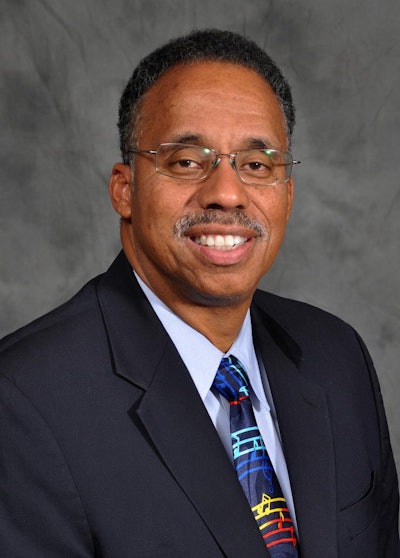With more than one-third of the nation’s college students being people of color, there’s increased pressure for universities and colleges to foster a more inclusive learning environment. Prompting protests from students and higher education advocates, much of the outcry has focused on the lack of diversity among university faculties.
Today only about 6 percent of college faculty are Black or Hispanic.
 Dr. Ansley Abraham
Dr. Ansley AbrahamThe issue itself is bigger than education. In a global economy, where information and data are king, America’s competitive edge is wrapped in a sea of information from and about diverse nations, cultures, technologies and any number of factors. This requires an education system that values broader perspectives and diverse points of view in order to prepare workers to make sense of a flood of information.
Correcting this decades-long imbalance, however, is a slow and heavy lift. And while many academics may welcome the opportunity to help their campuses become more inclusive, the work often falls to faculty of color. Whether it be from students of color themselves, school administrators or a sense of personal duty, professors of color are expected to lead on the diversity front.
“You very often hear young, underrepresented minority faculty complain that they are being put upon to serve in that role in that department,” said Dr. Ansley Abraham of the Southern Regional Education Board (SREB), a think tank for public education representing 16 Southern states. “If you are the only professor of color in your department, you do tend to be called upon more often than your colleagues to provide that service.”
Experts argue that unfortunately, this predicament poses a web of complications for underrepresented faculty. The failure of many top schools to make significant progress on diversity can mean that institutions are relying too heavily on a tiny fraction of the higher education community to smooth over racial problems. For academics of color, especially those vying for tenure, this added responsibility can hurt their careers.
New research backs up previous studies that suggest professors of color may be imperiling their tenure and promotion prospects by performing service work to help their institutions become more racially inclusive. It’s common knowledge in academic circles that publishing papers and acquiring research dollars are the most valuable activities for moving up the higher education ladder. Scholars who excel at research tend to get academic tenure.
On the contrary, professional work tied to improving diversity – such as building opportunity pipelines, recruiting and mentoring — are discountable. A study out this year, found that marginalized professors spent twice as much time mentoring, recruiting and “serving on various task forces,” than their White male counterparts. Higher education experts say that these activities take away time that could be applied to the more career-accelerating work of publishing.
“For new faculty, there is an expectation of service. The danger, of course, is serving on too many committees,” said Abraham. “That tenure clock is ticking and getting overcommitted with committees will detract away from those other criteria that are more important,” he said.
Regardless of race, achieving tenure requires a tremendous act of balance. Typically professors’ contracts stipulate how much time they should devote to teaching, research, and service to the school. However, in practice, for new faculty, these contractual lines are blurred. Faculty of color, especially, worry that saying no will cost them votes at tenure time. A second study found that professors of color felt increasing pressure to address diversity-related issues. At the same time, that work complicated their work relationships.
“When you are pre-tenure you got to make everybody happy. Every committee I was asked to serve on before tenure, I said yes to,” said Dr. Dionne Stephens, a professor of psychology at Florida International University. She recalls, one semester, joining seven search committees. “And I think especially as women and people of color, you are looked at differently if you say no.”
Students of color also add to the pressure placed on faculty of color. Being one of a few faculty of color means you get called on lot by students as well. Faculty of color often feel overextended with mentoring too many students and helping outside the traditional bounds of the student and professor roles. Sometimes students of color ask faculty of color to intervene on campus conflicts involving race.
Stephens is one of a handful of professors of color in her department. According to her, she is often asked by students for assistance in resolving conflicts between students and other faculty.
“It happens all the time. I am fortunate that there’s a group of faculty in my program who are really supportive of these issues but there have been cases of blatant racism,” she said. “Several students of color has had an incident with a faculty member.”
Aside from time consumption, this added work can also be isolating. Stephens echoed a familiar sentiment among professors of color who said that dealing with race issues that placed them in heated conversations with their colleagues and affected their working relationships.
Caught among various professional responsibilities, a scarce supply of mentors for diverse students and the ever-moving target of tenure and promotion, professors are having to navigate a turbulent sea of expectations when it comes campus diversity issues.















